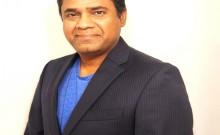
Economic forecasting is a cornerstone of decision-making in sectors like policy, business, and finance. While this discipline faces numerous challenges in terms of accuracy, it remains a critical tool for guiding decisions in an increasingly complex global economy. Ravitej Veeramachaneni, an expert in the field, explores the evolving innovations in economic forecasting and how these are helping to navigate the inherent uncertainties of economic predictions.
The Complexity of Economic Systems
Economic forecasting is challenging due to the complexity and dynamic nature of economic systems, which are influenced by a wide range of unpredictable variables. From macroeconomic indicators like inflation to microeconomic factors such as consumer behavior, these systems constantly evolve with changes in global trade, technology, and policy. Traditional models often struggle to keep up, but advanced techniques like machine learning and artificial intelligence (AI) are addressing this issue. By recognizing patterns and relationships that traditional models miss, AI-driven approaches are creating more responsive and accurate economic predictions.
Tackling Unforeseen Shocks
Forecasters face challenges in accounting for unforeseen shocks like natural disasters, geopolitical events, and pandemics, which can drastically alter economic paths. The COVID-19 pandemic showed how such events can quickly make forecasts obsolete. To address this, innovative techniques now use real-time and diverse data sources, such as financial market data, satellite imagery, and social media analysis. These sources help detect early signals of economic shifts, enabling forecasters to predict or respond more swiftly to unexpected global disruptions.
Understanding Human Behavior in Forecasting
Predicting human behavior adds complexity to economic forecasting, as consumers, investors, and policymakers often act unpredictably, influenced by emotions, biases, and external events. Traditional models struggle with this variability. However, innovations in behavioral economics are bridging the gap by incorporating insights from psychology and sociology. These new models account for cognitive biases and decision-making patterns, making them better suited to predict market responses. As a result, they improve forecasting in areas influenced by human sentiment, such as consumer spending and investment decisions.
Improving Data Quality and Accessibility
The quality and timeliness of economic data remain challenges for forecasters. Indicators are often revised long after release, affecting predictions. Data collection delays lead to outdated information, especially in developing economies with weaker statistical infrastructure. Efforts to enhance data quality focus on international collaboration and standardizing statistics. Technological advancements also enable faster, more accurate data collection, particularly in regions where traditional methods fall short. These improvements help forecasters make more reliable, up-to-date predictions.
Refining Forecasting Methodologies
Refining forecasting methodologies is essential for improving accuracy. Traditional econometric models are now enhanced with sophisticated tools that capture non-linear relationships and feedback loops in economic systems, allowing for a deeper understanding of variable interactions. Ensemble forecasting, which combines predictions from multiple models, has also proven effective by leveraging the strengths of different approaches, reducing the weaknesses of individual models. Additionally, forecasters increasingly integrate qualitative insights from domain experts alongside quantitative models to offer a more comprehensive view of potential economic scenarios.
The Path Forward in Economic Forecasting
While perfect economic forecasting remains elusive, innovations are making predictions more reliable and nuanced. By recognizing model limitations, refining methodologies, and using diverse data sources, forecasting is becoming more adaptable. Continued advancements in machine learning, AI, and advanced analytics are improving accuracy. Real-time data integration is also addressing unforeseen shocks and unpredictable human behavior. Though uncertainties persist, these innovations are bringing us closer to a more informed and prepared approach for navigating global economic challenges.
In conclusion, as Ravitej Veeramachaneni points out, economic forecasting remains a critical yet imperfect science. With ongoing innovations and improvements in forecasting techniques, decision-makers across various sectors can continue to rely on these predictions to navigate an increasingly volatile economic landscape.

















